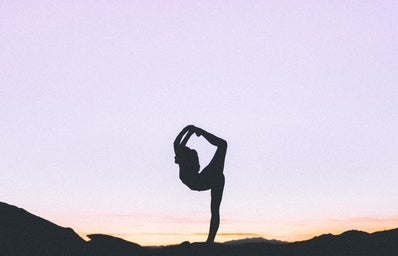Hello there, humans with vaginas. Let’s have a chat. Periods are not fun. Cramps and cravings and feelings and a small graveyard of underwear does not a good week make. And I believe that right now periods can cause even more problems due to the drought in the Western Cape.
I, and I suspect many other humans, have to flush the toilet waaaaay more when I’m on my period because you know…blood and stuff. And when you’re trying to save water and follow ye olde “mellow yellow” rule, this can be incredibly frustrating. I find that my problem comes from blood finding its way into the toilet bowl either because my tampon is soaked through or because I’m wearing a pad. I then flush the toilet even though it wouldn’t be necessary otherwise. Because a menstrual cup catches all the blood inside your body, and can’t soak through like a tampon, I thought that it might be a solution to my problem.
Image: Rodger Bosch
Now, a disclaimer before we get into it. There is nothing shameful or disgusting about period blood. I have spoken to many people who do not feel the need to flush the toilet if there is blood in it, and I think that’s awesome. For me, personally, it largely depends on the situation. When there is a lot of blood or I am at home I prefer to flush because, well, I live with two guys and I’m a little uncomfortable leaving bits of my uterus in our shared toilet. It may be that you do not find you use any extra water when using traditional period products, and that’s great, but I thought that a menstrual cup may help people like me to be more water-wise!
Menstrual cups have been gaining popularity in the past few years as an alternative to traditional period products like tampons, pads and pantyliners. The cup is made of medical grade silicone and is inserted into the vagina during one’s period. The blood collects in the cup and when full is removed, emptied, rinsed and re-inserted. After your period is finished, you need to boil the cup in water to sterilise it, and then you can store it away until the next period. The cup has been praised as being eco-friendly, sustainable, affordable, and possibly less harmful than tampons when it comes to health risks such as Toxic Shock Syndrome. The cup that I used is the Pinkcup that can be purchased on Takealot for R250. The Pinkcup comes in two sizes (small and large), can be worn for up to 12 hours, and lasts for 10 years. It takes some practice inserting the cup, but once you’ve got the hang of it, you’re sorted.
Image: Raquel Camamcho Gamez
My hypothesis was that the cup would allow me to flush less, as blood would only get in the toilet when I emptied the cup – once in the morning and once in the evening. A little extra water is used to rinse out the cup, but no more than you use when washing your hands! My idea was to use only pads for one period, and the cup for my next period, and record how many times I flushed the toilet and how many period products I used. Unfortunately, due to a number of factors (mainly my irregular periods due to problems with my birth control pills), I was unable to conduct this study under normal conditions, meaning I couldn’t get accurate results. So, I’ll just have to rely on my own experience and some good old common sense.
Now, the answer to the big question: does using a menstrual cup save water. Yes. During periods where I use traditional menstrual products (and I don’t want to leave blood in the toilet, or I need to change my tampon), I flush an average of around four times a day, excluding the times that I flush for other reasons (?). However, using a menstrual cup, I only have to worry about extra flushes twice a day. So that’s literally half the amount of water being used to flush, and one toilet flush uses 9L (according to this here handy poster), meaning I save 18L per day! The amount of water that I need to use to wash and boil my cup doesn’t even come close to negating the amount that I saved. Using a menstrual cup means that I save around 126L a month. I also use about half the number of period products, as I only need to wear a pad or pantyliner on particularly heavy days (ahem, #daytwo), which is an added bonus for the environment! It was awesome to go about my day without worrying about the amount of extra water that I was using, as well as not having to stress about bleeding through my tampon, even when gymming, hiking and (of course) napping. I felt like a stock photo.
I see it as a logical step for people to switch to a menstrual cup if only for the immense impact this could have on the water crisis in Cape Town. It may seem intimidating to learn to use a new product after years of using pads and tampons, and it certainly takes some time to adjust, but the pros far outweigh the cons. There are so many benefits, for the environment, your health and even your wallet.
Switching to a menstrual cup is a small way for you, as an individual, to make a monumenstrual difference!


